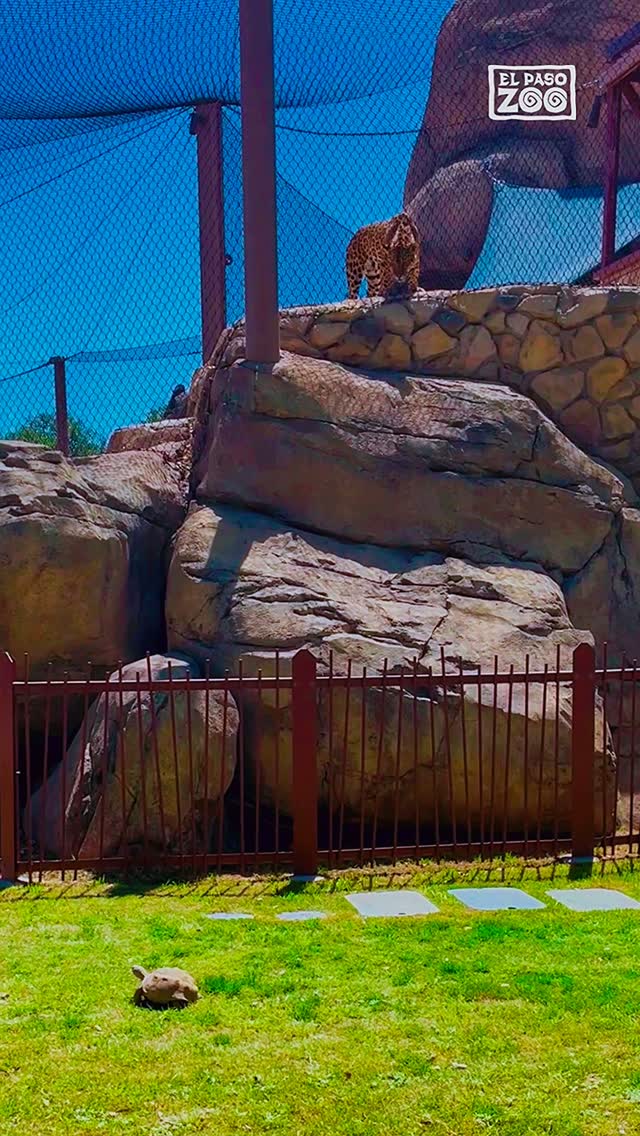- The bond between jaguars and tortoises, focusing on Luna’s unique interactions.
- The role of zookeepers in understanding and nurturing animal relationships.
- The natural habitat and behaviors of jaguars and Texas tortoises.
- Conservation efforts and the significance of zoos in wildlife protection.
- Educational initiatives and community engagement in zoos.
Luna, our inquisitive female jaguar, has formed a captivating bond with a Texas tortoise, showcasing the delicate interplay between these two remarkable species. This interaction isn’t just a charming spectacle; it reveals profound insights into animal behavior and the importance of attentive care in zoological settings.
Jaguars, like Luna, are apex predators, predominantly found in the forests of Central and South America. Known for their stealth and strength, jaguars play a crucial role in maintaining ecosystem balance. Their preference for dense forest cover and reliance on water bodies makes them adept swimmers and skilled hunters.
Texas tortoises, on the other hand, are terrestrial reptiles found in semi-arid regions. Their slow movement and herbivorous nature contrast sharply with their feline companions. These tortoises primarily feed on grasses and cacti, adapted to thrive in dry conditions thanks to their ability to store water efficiently.
The connection between Luna and the tortoise underscores an aspect often overlooked in wildlife caretaking: social enrichment. Zookeepers Rebecca and Ulysses have tapped into the behavioral needs of both animals, fostering an environment where natural instincts are nurtured. Enrichment activities like these stimulate mental and physical well-being, critical for animals in captivity.
Zookeepers are essential to cultivating these interspecies relationships. By observing nuances in behavior, they fine-tune environments to meet the specific needs of each animal. This includes novel experiences, providing diverse stimuli that mimic an animal’s natural setting. For Luna and the tortoise, being outdoors on the lawn offered a fresh environment, contributing to their enrichment and engaging their instincts positively.
Wildlife conservation is a key focus in modern zoological practices. Through education and innovative care, zoos aim to protect endangered species from threats like habitat loss and poaching. In particular, jaguar populations face significant declines due to deforestation and human encroachment. Conservation efforts are vital in safeguarding these powerful carnivores and ensuring genetic diversity.
Similarly, Texas tortoises encounter challenges from habitat fragmentation and vehicle collisions. By maintaining healthy populations in captivity, zoos contribute to the long-term survival prospects of these species. Collaborative breeding programs and reintroduction efforts work hand in hand with field conservation initiatives.
Zoos also engage the public in conservation through educational outreach. Programs that highlight the interdependence of species, such as the connection between Luna and the tortoise, inspire curiosity and awareness about biodiversity. Interactive exhibits, guided tours, and informational materials help visitors understand the intricate web of life and the importance of preserving it.
The role of zoos extends beyond conservation. They serve as centers for scientific research, providing valuable data on animal health and behavior. These insights are crucial for developing effective conservation strategies and enhancing our understanding of animal biology.
In the broader context, interactions like those between Luna and the tortoise contribute to a deeper appreciation of nature’s complexity. By observing and studying these relationships, we gain insights into the adaptability and resilience of wildlife. These lessons are vital as we strive to coexist sustainably with the myriad of species that share our planet.
Luna’s fondness for her tortoise companion is a testament to the dedication of zookeepers and the potential for animals to thrive in diverse environments. By fostering such connections, zoos play a pivotal role in conservation, education, and the promotion of global biodiversity. Through their efforts, these institutions shine a light on the paths we can take to ensure the future of wildlife on Earth.
*****
Source Description
❤️The Tortoise 🐢 and the Jag 🐆!
Our female jaguar, Luna 🌙, apparently likes Tortoises!
Two of our zookeepers, Rebecca and Ulysses, took one of our Texas Tortoises out to the lawn so that the Tortoise could experience a different environment, and so that Luna could be entertained! ❤️🐆🐢If this isn’t love and dedication, don’t know what is. Our zookeepers are finely tuned to their animals’ needs, wants, quirks, and ailments. Thank you, zookeepers 🙏😍

